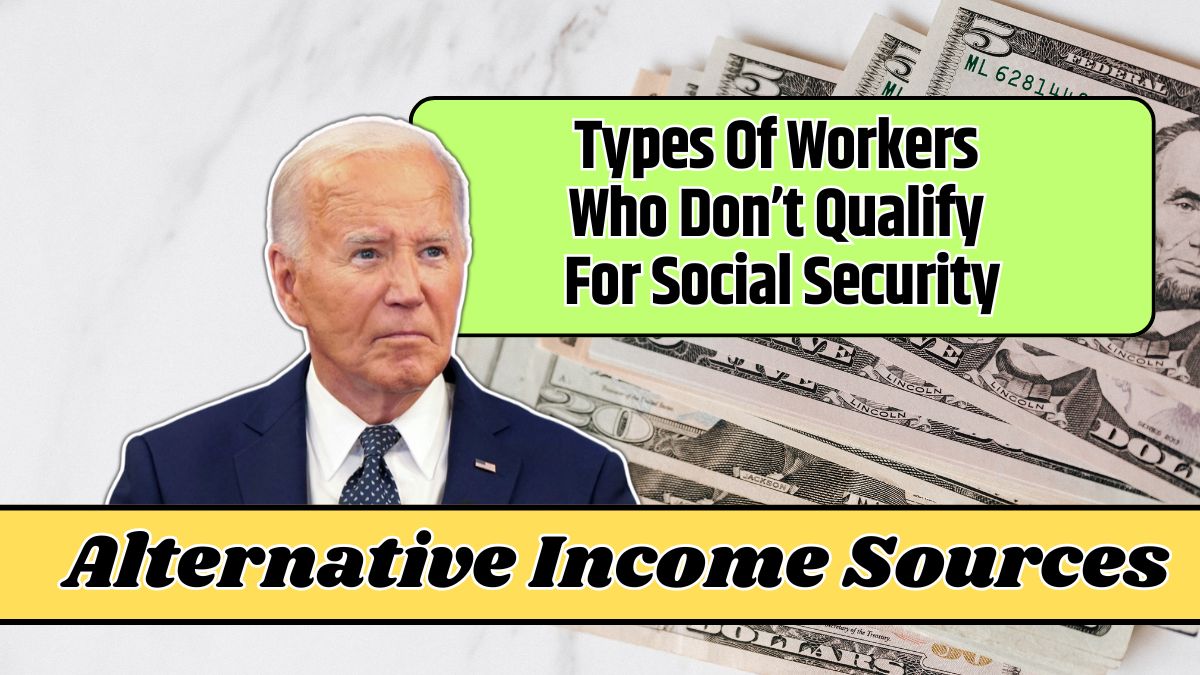For most Americans, Social Security is an essential support in retirement, providing a steady income in old age. However, not everyone receives Social Security benefits.
Roughly 3.3% of individuals aged 62 to 84 fall into the category of “never-beneficiaries,” meaning they do not qualify for Social Security and face a disproportionately high poverty rate.
According to the 2023 Trustees Report, this segment of the population struggles financially, often relying on other income sources that rarely match the stability and predictability of Social Security.
Who Misses Out on Social Security Benefits?
Several demographics are overrepresented among those who will never receive Social Security. The 2024 data identifies the groups most likely to be left without these benefits:
- Women: 63% of never-beneficiaries are women, often due to sporadic work histories or time spent out of the workforce for caregiving.
- Hispanics: 28% of this group are Hispanic individuals, many of whom face barriers to stable employment and financial resources.
- Immigrants: Nearly half of never-beneficiaries are immigrants, particularly those who arrive later in life without enough years in the U.S. workforce to qualify.
- Never-Married Individuals: 21% of those without Social Security benefits have never been married, which reduces eligibility for spousal or survivor benefits.
- Widows: 20% of never-beneficiaries are widows, some of whom may not qualify for survivor benefits due to insufficient work credits on their own or their spouse’s record.
- Individuals with Less Than a High School Education: 36% of never-beneficiaries have low educational attainment, often correlating with jobs that lack retirement benefits.
These statistics reveal a pattern of vulnerability among never-beneficiaries, who often come from backgrounds with limited access to stable jobs that offer retirement benefits or qualify for Social Security.
Types of Workers Who Don’t Qualify for Social Security
There are three main categories of workers who may never receive Social Security benefits:
- Infrequent Workers (38.9%): This group includes individuals who haven’t earned the 40 work credits (about 10 years of employment) needed to qualify for Social Security. Gaps in employment, often due to family caregiving or sporadic work, are common.
- Noncovered Workers (10.8%): This category consists primarily of state and local government employees whose jobs are not covered by Social Security, as they participate in other pension systems instead. Some state workers may qualify for partial benefits if they worked in a Social Security-covered job at some point.
- Those Who Die Before Receiving Benefits (1.3%): A small portion of people pass away before reaching the minimum age for collecting Social Security, which is 62. This group is mostly composed of those who pass unexpectedly or suffer from severe illness before retirement.
High Poverty Rates Among Never-Beneficiaries
A staggering 54.3% of never-beneficiaries live in poverty, compared to only 5.8% among those who currently or will eventually receive Social Security. Without this support, they are at a severe economic disadvantage, highlighting the critical role Social Security plays in preventing poverty among older adults.
Poverty Rate Comparison
| Group | Poverty Rate |
|---|---|
| Never-Beneficiaries | 54.3% |
| Current/Future Beneficiaries | 5.8% |
The stark disparity in poverty rates shows how Social Security’s absence creates a financial gap that is often insurmountable, especially for those with limited work history or alternative resources.
Alternative Income Sources for Never-Beneficiaries
Without Social Security, never-beneficiaries rely on a mix of other income sources, which often fall short in meeting their financial needs:
- Late-Arriving Immigrants: Many recent immigrants who don’t qualify for Social Security rely heavily on coresident income, which makes up 36.5% of their household income. This typically comes from living with family members who contribute to household expenses.
- Infrequent Workers: Those with limited work history often depend on Supplemental Security Income (SSI), a need-based program that provides a minimal monthly benefit to eligible individuals. About 31.2% of infrequent workers depend on SSI to cover basic needs.
- Asset Income: Although some never-beneficiaries receive income from investments, the levels are generally modest and provide far less stability compared to Social Security.
These income sources lack the regularity and security that Social Security offers, leaving recipients more vulnerable to financial instability, particularly during economic downturns or unexpected expenses.
Why Alternative Income Falls Short
Alternative income sources, like SSI and coresident income, don’t provide the same level of security as Social Security. SSI benefits are limited, with a maximum monthly payment that is often insufficient to cover all basic needs.
Likewise, relying on family members for financial support can be unpredictable and may not fully meet the costs of living independently.
Moreover, Social Security benefits are protected against inflation through annual Cost-of-Living Adjustments (COLA), while SSI payments are typically lower and are often insufficient to keep up with rising costs.
Additionally, Social Security offers survivor benefits, which can provide ongoing income for widowed spouses, whereas SSI does not provide these same protections.
A Positive Trend: Fewer Never-Beneficiaries Expected in the Future
Encouragingly, projections suggest that the percentage of never-beneficiaries may decrease slightly in the coming years. This shift could be attributed to policy changes or increased efforts to encourage long-term workforce participation, which would allow more individuals to accumulate the necessary work credits.
Additionally, raising awareness of Social Security qualifications and offering guidance to workers about eligibility could help reduce the number of never-beneficiaries in the future.
While Social Security remains an essential source of financial security for retirees, not everyone qualifies for these benefits. Those who are excluded, including many women, immigrants, and individuals with limited education, often face much higher poverty rates and lack the reliable income that Social Security provides.
Alternative income sources like SSI or coresident income fall short of meeting their needs, leaving many never-beneficiaries struggling to maintain financial stability.
Understanding these challenges underscores the importance of ensuring broader access to retirement support and highlights the critical role Social Security plays in preventing poverty among seniors in the U.S.



















